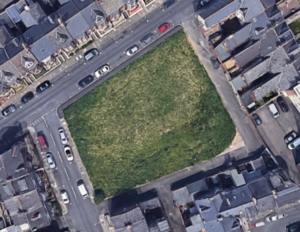What your Implications of Light Access for Architects?
Within the world of architecture and property development, the concept of “Right to Light” carries significant weight. This legal principle guarantees that property owners maintain a certain amount of natural daylight entering their buildings, which can be essential for both commercial spaces. The implications of this right are far-reaching, impacting not just the design and planning phases of development but also the potential for legal disputes between neighbors. Right To Light Aldgate and developers should navigate these complexities carefully to steer clear of costly mistakes and guarantee compliance with the law.
Right to Light surveys function a crucial role in this process, providing the necessary insights needed to assess any infringements on light rights prior to a project moves forward too far. By comprehending the legal landscape and the historical context of Right to Light in the UK, architects can better plan their designs and consider the interests of all parties in mind. In this article, we will explore the multiple dimensions of Right to Light surveys, from their necessity in property development to the tools and techniques used in their execution, aiding architects in making informed decisions that harmonize innovation with legal compliance.
Understanding Right to Light
Right to light is a legal principle in real estate law that provides property owners the right to receive natural light through specific openings, such as windows. This right is usually established through enduring use, and it can be essential for the usability and value of a property. When a new construction hinders this access to light, it can cause controversies between neighboring property owners.
The principle of right to light originated from traditional law and was established through various legal precedents in the UK. The foundation rests on the idea that sufficient light is essential for the pleasure of a property, particularly in urban settings where buildings are in near each other. Over time, this entitlement has progressed alongside transforming architectural practices and urban planning considerations, establishing it as a relevant aspect for architects and developers to know.
For architects, understanding the consequences of right to light is vital during the design phase of a project. Adherence with right to light regulations can affect design choices, including the height and placement of buildings. By including right to light assessments in the initial phase in the planning process, architects can prevent potential issues with neighbors and ensure that their projects achieve both artistic and utilitarian objectives.
Legal Aspects and Disputes
Right to light is a critical legal consideration for designers and builders, as it can greatly affect the feasibility of projects and design choices. Comprehending the lawful structure surrounding rights to light helps ensure compliance with planning laws and minimizes the risk of disputes with neighbors. Rights concerning light often come into play when recent constructions threaten to block existing light levels enjoyed by surrounding buildings. Therefore, incorporating right to light assessments early in the design process can help avoid potential disputes down the line.
When designing a new construction, it is vital to be aware of the possibility for legal disputes regarding right to light. If a neighboring property owner feels their rights have been infringed, they may seek legal remedies, which can include injunctions or financial claims. Builders must work closely with attorneys and right to light assessors to manage these complex matters, ensuring that their design respects existing light rights and adheres to relevant regulations. Effective communication with neighbors can also play a part in resolving potential disputes peacefully before they escalate.
Adherence to laws regarding right to light not only protects the development process but also enhances relationships with the local neighborhood. By actively addressing right to light issues and considering the implications on surrounding buildings, architects can mitigate risks that could lead to expensive legal battles. This strategy not just obtains planning approvals but can also boost the overall effectiveness and standing of a development project, creating harmonious living and working environments for both builders and neighbors alike.
Light Surveying and Recommended Approaches

As performing a Right to Light survey, it is important to handle the process with a thorough understanding of the existing legal framework and the likely implications for both builders and neighboring properties. Identifying the current light conditions of a site is crucial, as it provides the foundation for any prospective development. A thorough analysis not only evaluates the levels of natural light received but also addresses the views and possible obstructions created by new constructions. Utilizing a specialist in Right to Light assessments increases the accuracy and dependability of the results, which is essential for informed decision-making.
Best practices in conducting these surveys consist of employing contemporary tools and techniques such as 3D modeling, which can deliver a detailed view of how light interacts with a proposed development. This advanced technology allows architects and planners to predict the influence of their designs on surrounding properties more accurately. Additionally, adherence to the Building Research Establishment (BRE) guidelines ensures that assessments meet industry standards, thereby fortifying the validity of the findings against likely legal challenges.
Interaction with neighboring property owners throughout the process is also critical. Early involvement can alleviate disputes related to light infringement, as most issues can be resolved through discussion before reaching the dispute stage. By upholding transparency and systematically involving stakeholders in the planning and assessment phases, contractors can cultivate a collaborative environment that reduces the likelihood of objections and promotes viable development practices.